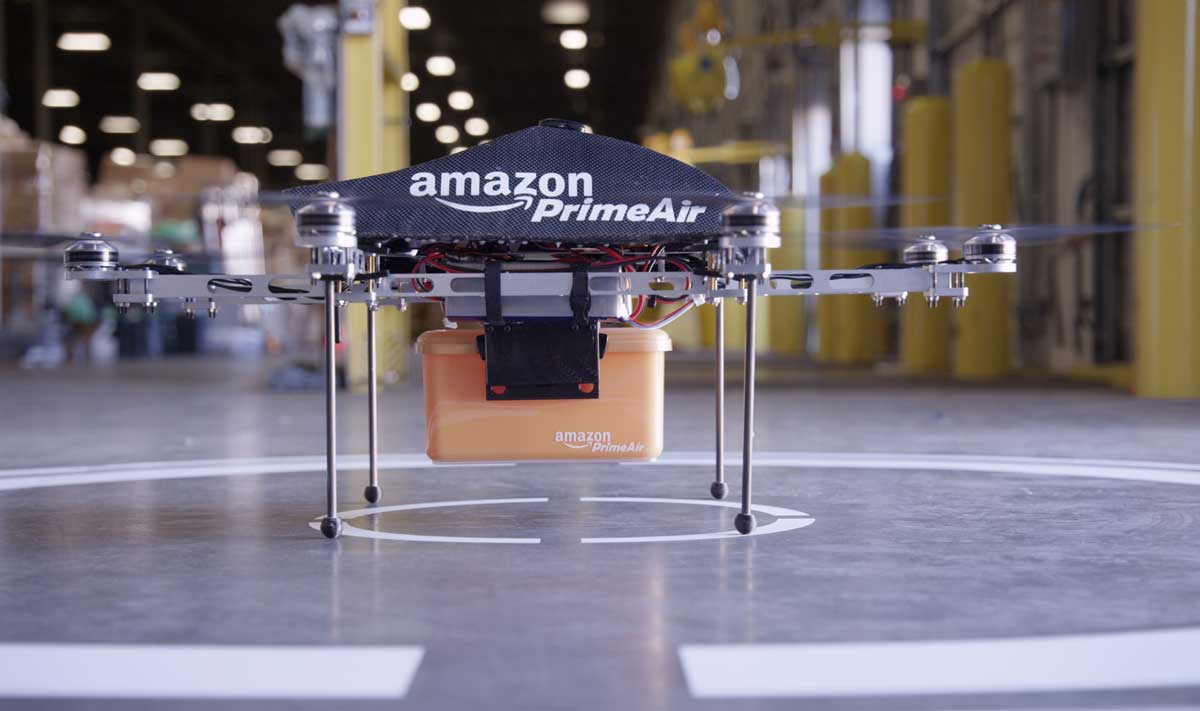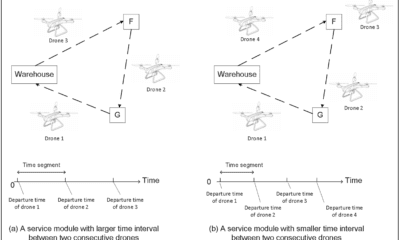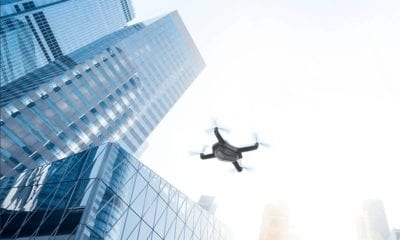
News
Drones in Warehouses – Adoption and Implementation
Despite aerial delivery drones being the focus of many news stories around this technology, there are many other fields where drones are being adopted and in which they show great acceleration.
One of them is warehousing – and according to stats, it currently constitutes 30% of the cost of logistics in the United States. The rise of e-Commerce, the greater customer service demands of retail stores as well as the shortage of skilled labor are all among the factors that have intensified the competition for efficient warehouse operations.
Technology Diffusion And Adoption Through (Different) Unmanned Vehicles
In a new paper titled, ‘Feasibility of Warehouse Drone Adoption and Implementation‘, a group of authors expand on the theoretical perspectives on technology diffusion and adoption, creating a link between tech and a framework that would inform supply chain decision makers on the best times to invest in new drone-related technologies.
As the authors note in the introduction of the paper:
“The process of adoption of technology has resulted in a media cycle of exaggerating the promise of a new technology in the short-run while underestimating its importance over the long run— dubbed the “hype cycle” by Gartner and more generally known as Amara’s law —renders suspect most of the prognostications in mainstream media. Given the importance of warehousing in global supply chains and that warehousing constitutes 30% of the cost of logistics in the US , the time is right for a reasoned inquiry regarding the factors that supply chain decision-makers should use to decide when to invest in the new robotics technology.”
When it comes to the actual term “drone technology” they further explain that it may involve very similar and sub technologies such as unmanned aerial vehicles (UAVs), unmanned combat aerial vehicles (UCAV), unmanned spacecraft remote controlled and autonomous vehicles, unmanned ground vehicles (UGV), unmanned surface vehicles (USV), autonomous underwater vehicles (AUV) and other types.
They specifically focused on investigating wheeled unmanned ground vehicles (UGV) in the paper – making warehouse operations easier and specifying them under the term “warehouse drones.”
UGVs And The SCIM Framework That Focuses On The Best Aspects Of The Technology
After going in detail on the entire technology model that UGVs bring to the market, the authors begin expanding on a spiral cost implementation model (SCIM) which represents a hybrid framework that combines different models in order to encompass their salient positive aspect while compensating for the reduced parsimony by reducing the negative aspects.
“The SCIM framework incorporates a constant review phase in response to the intensely dynamic technology and regulatory environments. A cost review at every stage of the model reflects the rapid changes and the shift of purpose from developing new product lines to on-going supply chain operations. As a visual enhancement, the spiral grows larger or smaller based on the cost in each phase. SCIM incorporates the TAM’s perceived usefulness into the planning and evaluation stages. The model loses in its application to creating a new technology, but gains from greater depth of analysis when adopting a new offering available on the open market—a circumstance currently confronted by warehouse managers considering drone adoption,” the authors commented in one section of the paper.
According to them, unmanned warehouse drones may greatly improve warehouse operations – whether they are aerial or wheeled. From reaching difficult places to making use of inventory management using codes, QR codes and RFID as well as industrial-focused Internet of Things (IoT) technologies, they are valuable as a tool and can work with a myriad of technologies.
Becoming An Essential Part Of The Warehousing Process
From accumulation to sortation, allocation and assortment, drones can easily blend into every phase and stage of the warehousing project. However, the authors are confident that warehousing is essential for the deployment of each technology, especially the one focusing on unmanned drones.
“The current generation of unmanned warehouse drones performs material transport, acting as a shuttle between humans who pick and pack the goods. The greatest impact of implementing warehouse robotics remains the ability to perform the human tasks of identifying product on the shelf, picking product in non-standardized packaging, and understanding the human context of the goods in order to properly package it for presentation to a human customer,” they conclude.
Citation: Gravier, Michael J.; Companik, Edward; and Farris, M. Theodore II, “Feasibility of Warehouse Drone Adoption and Implementation” (2018). Marketing Department Journal Articles. Paper 65. https://digitalcommons.bryant.edu/mark_jou/65

























